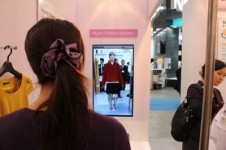Promotion-Seeking Asia Pacific Shoppers Present Opportunities
 Peter Gale, Managing Director, Retailer Services, APMEA, Nielsen
Peter Gale, Managing Director, Retailer Services, APMEA, Nielsen
As inflationary concerns continue to mount across Asia Pacific, more shoppers are turning to promotional offers for some respite from the rising prices of fast-moving consumer goods (FMCGs), according to a Nielsen study on shopper trends. Shoppers in Vietnam and Malaysia were particularly motivated by promotions, followed by shoppers in China.
In Vietnam, while FMCG retail sales grew the fastest in Asia Pacific during the first quarter of the year, a closer look at the numbers revealed that price increases accounted for the majority (75%) of that growth. Not surprisingly given that they have been hit harder by inflation than most other countries, almost 9 out of 10 Vietnamese shoppers claimed they were promotion-seekers, or those who say they will change brands on promotion, search for promotions or change stores due to promotions on offer. This represents an increase of 5 and 18 percentage points from 2009 and 2008 respectively.
Malaysian shoppers are hot on the heels of those in Vietnam, with 86 percent saying they seek promotions, up from 77 percent in 2008. For China, the increase has been more moderate: from 74 percent in 2008 to 80 percent last year. While the number of self-professed promotion-seekers increased in just about every market, one country bucked the trend: Korea. The country’s shoppers were actuallylesspromotionally driven than the year before, with 61 percent of Koreans saying they were enticed by promotions compared to 70 percent the year before – well below the Asia Pacific average of 68 percent.
Apart from the impact of inflation, shoppers are being exposed to a greater number of creative promotional offers as retailers and brand owners step up the momentum to gain share and/or retain their customers. This level of activity is going to be the new ‘norm’ as long as inflation does not let up and as shoppers seek more value. The real opportunity however, lies in building shopper and brand loyalty.
Interestingly, while Vietnamese shoppers are most focused on promotions, they scored among the lowest in terms of price consciousness across the region. Just 56 percent of shoppers in the country say they know all the prices of items they buy regularly/know the prices of most items and notice prices changes, compared to the regional average of 60 percent. Shoppers in India (88%) on the other hand, are the most price-conscious in the region, followed by Malaysian (68%) and Singaporean (62%) shoppers.
Male shoppers a bigger force to reckon with
As the number of male main shoppers grows steadily across the region, marketers will increasingly need to tailor their strategies to the needs and wants of this group. In particular, marketers should place more emphasis on markets like Malaysia, which currently still has the distinction of having the highest proportion of males who say they are the main shoppers for the household (37%), and the Philippines (33%). China (32%), which saw the highest jump in the proportion of male “main shoppers” from previous levels, also warrants a good re-look.
Vietnamese males, however, are the most “traditional” compared to their regional counterparts, with only 4 percent saying they shoulder the responsibility of being the main shopper for the household, the lowest score in the region for the past seven years.
Who are the most “impulsive” shoppers?
Shoppers in India (33%), Hong Kong (30%) and the Philippines (29%) stand out as the most impulsive (i.e., they usually do not plan their shopping trips) shoppers in the region. Across the region, an average of 20 percent of shoppers say they usually do not plan shopping trips. In these markets, retailers can re-evaluate their store layouts to encourage more ‘grab-and-go’ shopping, and devise strategies that suit the needs of the ‘impulsive’.
On the other side of the coin, Korean (98%) and Taiwanese (94%) shoppers were the most likely to plan their shopping trips.
Across the countries studied, shoppers in Hong Kong are also the most prolific “top-up” shoppers, averaging 10 such trips in a month, almost twice the regional average and more than thrice the monthly frequency of their “main” shopping trips. A similar trend can be found in Singapore, where shoppers make an average of about 8 “top-up” trips a month, also three times more than their “main” trips, and Indonesia, with an average of 6.6 and 1.8 “top-up” and “main” trips respectively.
The retail marketplace continues to evolve rapidly, presenting significant opportunities for store owners even in challenging environments. The key is as always in knowing how to best leverage these trends via marketing, promotions and even store layout and understanding the needs and desires of today’s consumers.



